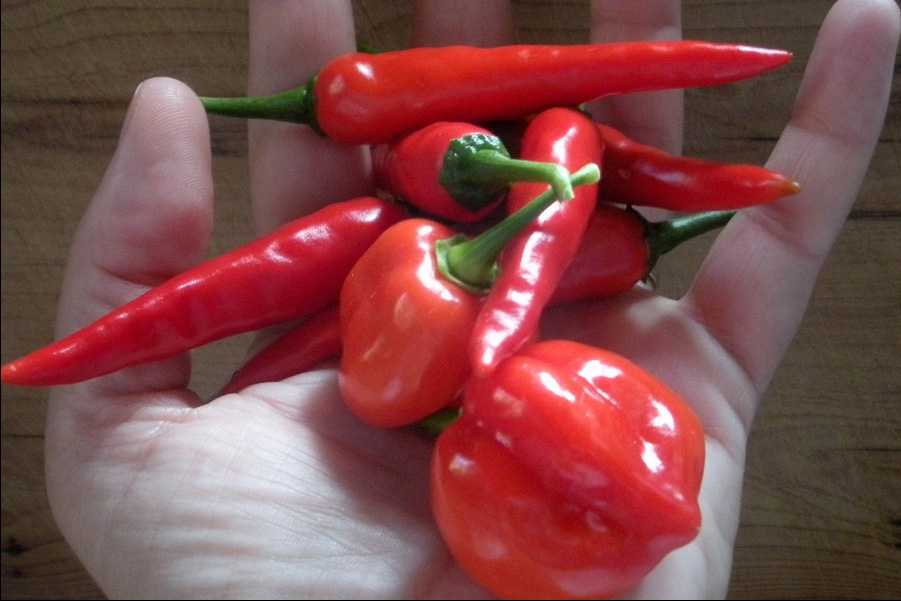
Botanical name:
Capsicum annuum; Capsicum chinense; Capsicum frutescens
Description:
There are several genus of chilies. Most chilies, like Thai chilies, jalapenos and long chilies are part of the genus ‘annuum’, which also features the capsicums. The genus ‘frutescens’ has very colourful, small fruits from white over yellow to green, red and purple; tabasco peppers and piri piri chilies are part of it. Scotch bonnets and habanero chilies are part of the ‘chinense’ genus, which offers the hottest chilies available.
Chilies are part of the nightshade or solanaceaes family. Only the fruit of chilies are edible! Flowers, greens and shoots should not be consumed because they contain a toxin that is bad for human health.
The fruits contain a different toxin called capsaicin. It’s highest concentration can be found in the white membranes of the fruit and it is the cause of the burning taste sensation that chilies induce. Chilies show varying concentrations of capsaicin, from capsicums containing no capsaicin to to very high contents in habeanero varieties. The heat of chilies is measured using the Scoville scale.
Chilies grow in small to medium bushes. They are are annuals or short lived perennials. The flower of the chilies is a very tiny, white version of the typical 5 pointed nightshade flower.
How to grow:
Chilies are a warm season crop, they need to be started in the warm months.
Sow in seed beds in Spring, three times as deep as the seed into a light, well drained soil. Keep moist and warm. After the plants are about 5 to 8 cm high and show at least 4 to 6 leaves, transplant into single pots. Fertilise once per week with liquid fertiliser.
Plant out in the garden beds into well drained loamy soil enriched with compost when they are 10 cm tall. Fertilise with liquid fertiliser once a week while producing fruit.
Growing in the neighbourhood:
Likes to grow in separate space but carrot, onion, ginger and tomatoes are welcome in the neighbourhood.
Pests and other problems and how we deal with them:
Usually grows without problems. Can be affected by budworms, then using a fine net to keep the moth from reaching the flowers helps. If caterpillars are apparent, spray with Dipel solution.
Season:
Start in Spring, short lived perennials
Seed-saving:
The plants are wind pollinated. Seed saving of true seeds should be possible if only plants of one cultivar are kept under one tent.
How to harvest and use:
Pick regularly as soon as the fruits are ripe. This encourages the production of more chlies.
Chilies are quintessential in Southern Asian and Mexican cuisine, used as a spice to achieve a pungent heat. They can be used raw and cooked. They are part of curry pastes and chili sauces. To preserve chilies, they can be dried or turned into a sauce. They work very well with citrus juice of lime and lemon, garlic, sweet potatoes, coconut milk, fish sauce, ginger, seafood, herbs like Thai basil, curry leaves and cilantro.